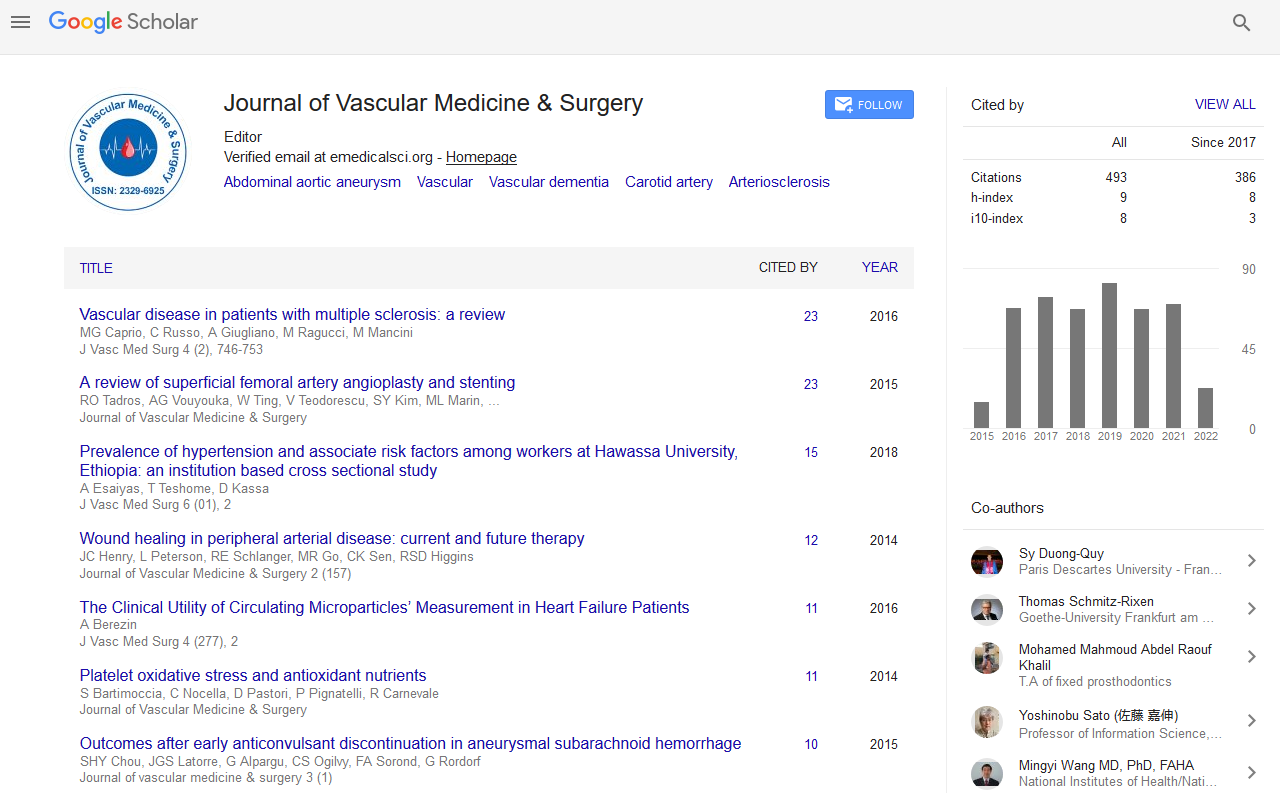Indexed In
- Open J Gate
- Academic Keys
- RefSeek
- Hamdard University
- EBSCO A-Z
- OCLC- WorldCat
- Publons
- Euro Pub
- Google Scholar
Useful Links
Share This Page
Journal Flyer

Open Access Journals
- Agri and Aquaculture
- Biochemistry
- Bioinformatics & Systems Biology
- Business & Management
- Chemistry
- Clinical Sciences
- Engineering
- Food & Nutrition
- General Science
- Genetics & Molecular Biology
- Immunology & Microbiology
- Medical Sciences
- Neuroscience & Psychology
- Nursing & Health Care
- Pharmaceutical Sciences
Abstract
Axillofemoral Bypass using Vein Grafts for Complicated Peripheral Arterial Disease
Dean Thomas Williams*, Samik Kumar Bandyopadhyay, Ana Filipa Alves Borges Morais, Hannah Gwynn Povey
Introduction: Critical Limb Ischaemia (CLI) with tissue loss secondary to lower limb Peripheral Arterial Disease (PAD) requires consideration for intervention in the form of endovascular and / or open surgical procedures to achieve improved perfusion and limb preservation. An Axillo-Femoral Bypass (AxFB) is only considered in cases where an endovascular or abdominal surgical approach to aortoiliac disease is not possible or is deemed too hazardous. Such patients may have an unfavourable pattern of arterial disease, significant co-morbidities and / or a hostile abdomen. Although prosthetic grafts are typically employed for AxFB procedures, vein grafts are an alternative with a lower risk of infection. We present our experience of AxFB grafting using autologous venous conduits in a select group of patients with CLI and tissue loss in the context of significant co-morbidities and elevated infection risk. Methods: A retrospective study of all unilateral AxFB grafts using autologous venous conduits performed at our limb salvage unit over a five year period (January 2014-December 2018) was conducted. Data is collected from written and electronic medical records as well as radiology, haematology and biochemistry reports. Results: Seven unilateral AxFB procedures using vein grafts were performed on five patients with CLI and tissue loss. Two patients had a second AxFB on the contralateral side on a separate occasion for progressive disease. Four patients were male and one was female with an age range of 55–79 years. There were no surgical site infections and no perioperative deaths. Graft patency was 86% at one year and 71% at two years. Three out of seven grafts (43%) failed during follow up. Two patients with graft occlusion developed CLI and tissue loss, one required above knee amputation and the other further bypass surgery. Six patients achieved complete wound healing. One patient died from lung cancer. Conclusion: Our results indicate that AxFB using an autologous venous conduit can be successful in patients with CLI and tissue loss in the context of significant co-morbidities and increased risk of infection. Further evidence is needed to support our findings and potentially stratify which patients would benefit from a venous, rather than a prosthetic, graft.
Published Date: 2020-09-21; Received Date: 2020-08-27


